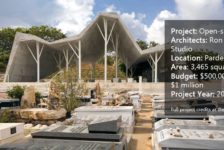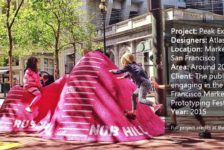What is Landscape Infrastructure?
What types of infrastructure will this book delve into?
Will it extend beyond tired conversations on sustainable water management?
Those were my initial questions, or perhaps even skepticisms, when I picked up this book.
I was happy to find that the well written, succinct prose of the Preface by Gerdo Aquino quickly answered those questions and in fact piqued my interest further to see exactly what ideas would be explored through this book.
The authors’ intention is clear:
‘…to question the ongoing viability of these single-purpose corridors by proposing that a multifunctional approach is more in tune with contemporary society”.
In order to achieve the goals set out, a book of topical essays exploring the different principles, which they define as Landscape Infrastructure, has been authored. After exploring the principles, ideas, and goals of what Landscape Infrastructure could be in the broader field of Landscape Architecture, the authors provide analysis of some representative SWA projects employing these ideas.
The book begins with an essay on “Reading the Recent Work of SWA” by Charles Waldheim, which I thought initially was a curious way to begin…as a book which seemed to stem from a topical idea as opposed to a firm biography. I soon found out that the rich history of SWA positions it well to be an authority on, or at least have a credible opinion on, the topic of Landscape Infrastructure.
“SWA, originally formulated as Sasaki Walker Associates in 1957, was conceived around the development of a distinct studio culture of multidisciplinary collaboration, decentralized autonomy, independent decision making, and design innovation”
With that history, SWA proves that the addition of a Los Angeles ‘think tank’ office and conceiving of landscape across disciplinary boundaries is in stride with the original SWA mission.
For me, the strength in the book lies in the essays, critical thinking, and the large scale masterplans which show how all of the pieces of Landscape Infrastructure can come together and the sum of the whole is much greater than its parts. The large scale thinking in projects such as Beizhi River Waterfront, Shunde New City, Ningbo Eco-Corridor, Anning River – New South Town, and Central Open Space in MAC, which connect pedestrian networks, ecological networks, water quality management, vehicular networks, and bicycle networks really is at the heart of why Landscape Infrastructure can be such an important and valuable discussion in contemporary practice.
The smaller scale installations were less convincing, focusing primarily on stormwater management and pedestrian networks which overlap to create a multiuse corridor or ‘Infrastructure’. I would argue that small scale installations, although a step in the right direction, are not greater than the sum of their parts when not integrated within a holistic approach. Small scale projects need to fit within a framework of a new citywide vision of what the urban environment can be. We as landscape architects, urban designers, and landscape urbanists need to be involved in the holistic reinvisioning of not just new cities and new environments, but how to best improve our existing cities under a unified vision.
“Infrastructure is a connective tissue that brings together disparate elements, instilling cohesion and purpose”
It is important to note, that this is not the first book or essay on the topic of Landscape Infrastructure, but it is a great addition to the conversation and the progression of the field of landscape architecture. This book furthers the dialogue of activating a holistic design approach to the world we live in.
Published in Blog









